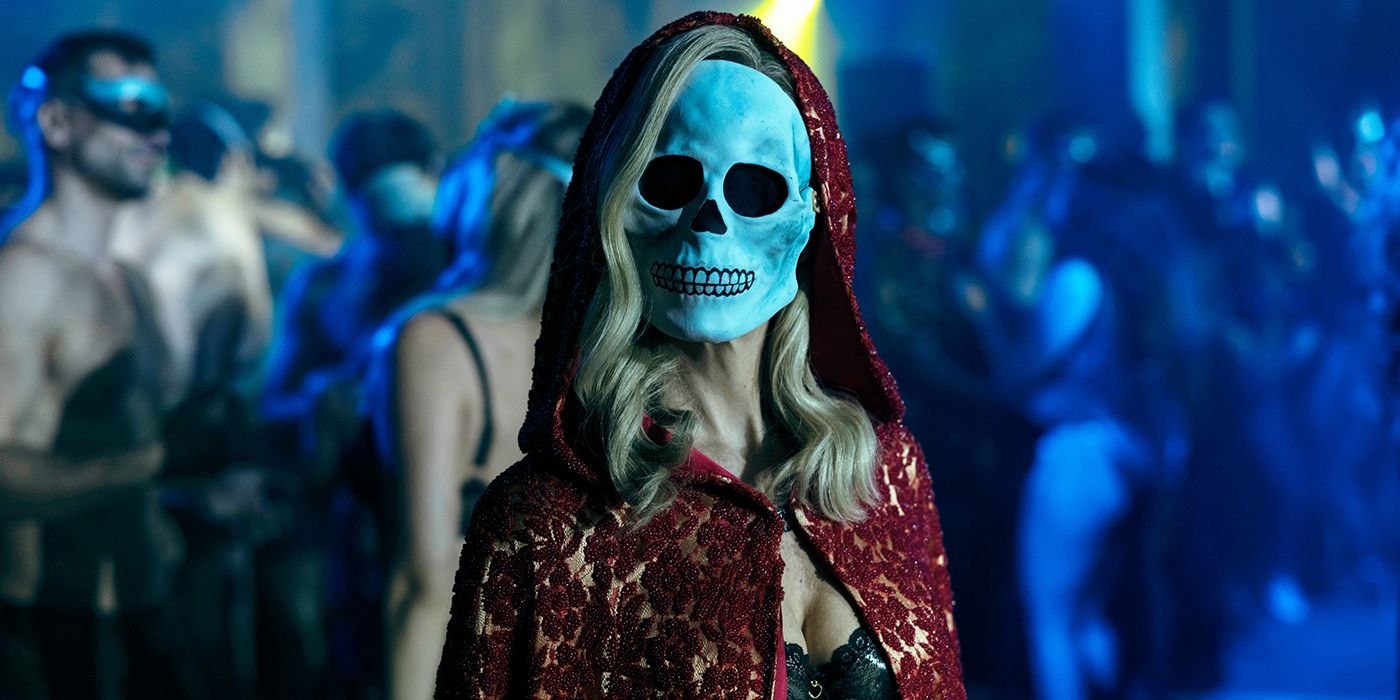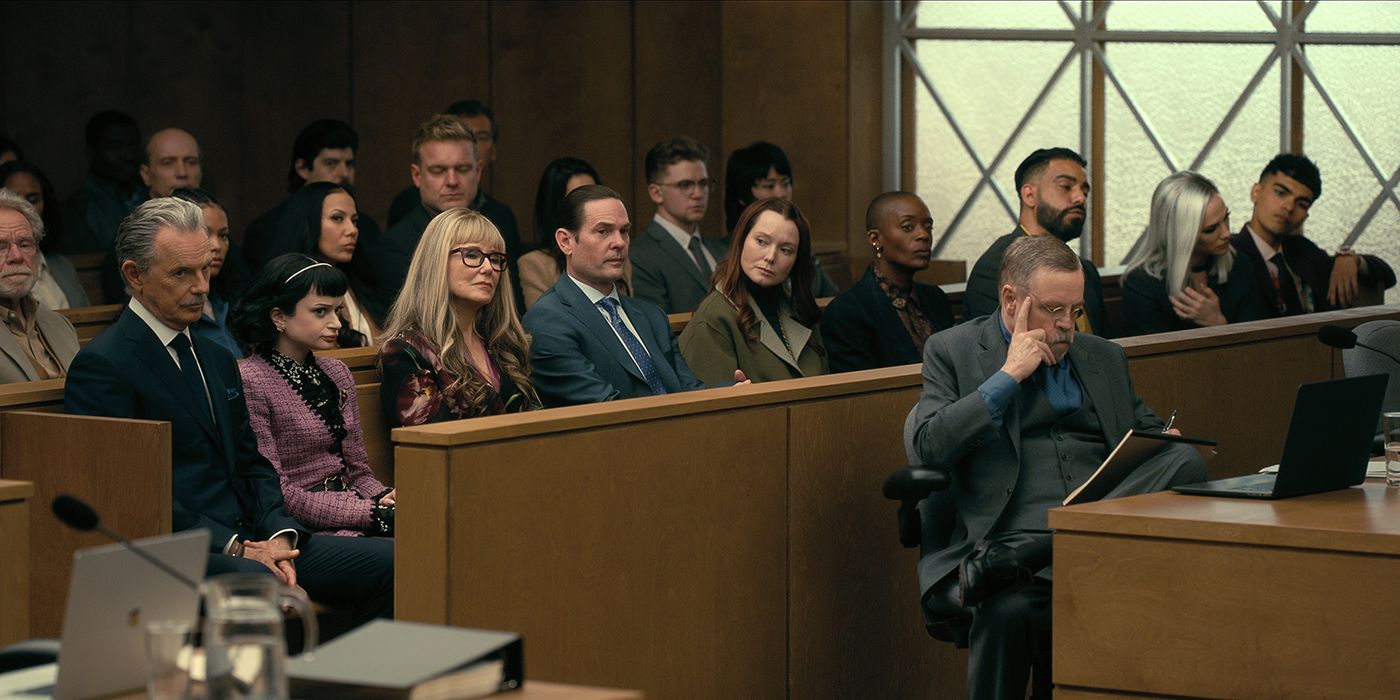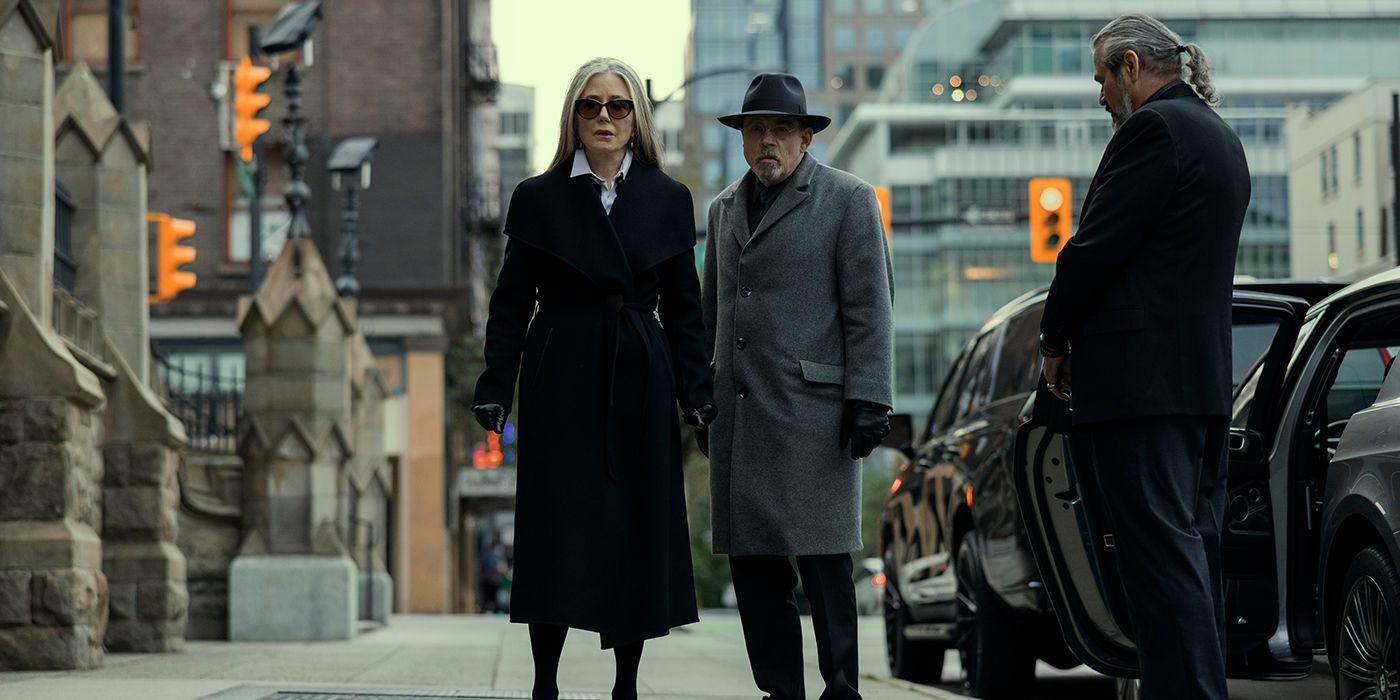This review was written during the 2023 WGA and SAG-AFTRA strikes. Without the labor of the writers and actors currently on strike, the series being covered here wouldn’t exist.As much as Mike Flanagan has become synonymous with horror, his TV shows also heavily play on themes commonly found in classic Gothic literature. For some, horror and the Gothic are interchangeable, but Flanagan carefully weaves the latter into everything from The Haunting of Hill House to The Midnight Club. Gloomy settings, haunted locations, dreams and nightmares, an emotional and mental burden, a shroud of mystery, and a dark and stormy night turn a typical horror story into one that is Gothic. Gothic horror, an off-shoot of the larger umbrella of Romanticism, came about in the 1760s, but Edgar Allan Poe later became a figurehead of Gothic fiction in America. It only makes sense that Flanagan, who has breathed new life into the works of Shirley Jackson and Henry James, would take on one of the modern forefathers of the genre for his next adaptation.
Flanagan’s The Fall of the House of Usher might not appear, on the surface, to embody what we imagine being the Gothic. It’s about a pharmaceutical magnate and his family which consists of everything from a gamer to a cake decorator — but that is merely the veneer of this story. Beneath the glossy surface that reminds us more of the Roys of Succession than the House of Usher, it’s clear that Flanagan has fully embraced what Poe has to offer. In blending the modern with the Romantic era, Flanagan is able to put his own unique stamp on some much-beloved stories.
Mike Flanagan Takes Liberties With Poe’s Writing in ‘The Fall of the House of Usher’ — and It Works
The concept of The Fall of the House of Usher is a simple one, but although the series shares the same name as the short story, don’t expect it to follow it to the letter. Roderick Usher (Bruce Greenwood) is the CEO of a powerful pharmaceutical company that has been hit by scandal after scandal. Although he’s made his wealth off of an opioid crisis, the morally bankrupt Roderick has recently experienced a more personal tragedy: all six of his children have died, one after the other, in rapid succession, and almost all in gruesome ways.
So, on one dark and stormy night, Roderick calls C. Auguste Dupin (Carl Lumbly), the investigator who has been trying to get him to answer for his company’s crimes, and asks to meet for a conversation. We learn, through these conversations, how each of his children dies and uncover the truth behind the mystery of the house of Usher.
References to Poe’s writing are folded into every aspect of the series. The pharmaceutical company is named Fortunato, there are nods to The Masque of the Red Death and “Annabel Lee” as well as constant raven imagery — there’s even a character named Lenore (Kyleigh Curran). But the story itself feels cohesive, despite bringing in elements from all of Poe’s works. For those who are Poe aficionados, there’s a wealth of references and callbacks to point out — the series is a treasure trove of the writer’s stories. For more casual viewers, there’s never a sense of the show winking at the audience as if to point out references you might not understand at first glance.
First and Foremost, ‘The Fall of the House of Usher’ Is a Family Drama
The beating heart of the story is the dysfunctional family of Ushers. Eldest kids Frederick (Henry Thomas) and Tamerlane (Samantha Sloyan) are the children of Roderick’s ex-wife, the aforementioned Annabel Lee (Katie Parker), while the four younger children — Victorine LaFourcade (T’Nia Miller), Napoleon Usher (Rahul Kohli), Camille L’Espanaye (Kate Siegel), and Prospero Usher (Sauriyan Sapkota) — are illegitimate. They all exist in varying degrees of spoiled, some having found their father closer to adulthood while some were brought into the family when they were much younger. There is a healthy animosity between the kids, made worse by the involvement of money. They are competitive and snarky toward one another, and when they start dying off, you’d hardly be able to tell that some of them are grieving. The series makes clear that although Roderick has acknowledged all of his children in some way, there’s no warmth or love in the house.
At Roderick’s side is his twin sister, Madeline (Mary McDonnell), an even more cunning and shrewd character who seemingly has a tight grip on the reins of both her emotions and the company. There’s also Juno (Ruth Codd), Roderick’s young wife, whose relationship with Roderick is problematic and not because of their giant age gap. Finally, Roderick and Madeline’s man-in-the-shadows is the menacing and enterprising Arthur Pym (Mark Hamill), someone who is not only a lawyer but a sort of jack-of-all-trades for the family; he knows about the skeletons in the closet and where the bodies are buried.
Although there is one central story linking the others together, each episode delves into the specific deaths of Roderick’s children, giving us glimpses into their lives and showing us how they died. Linking all of these tragic events is a peripheral character who slowly makes her way into the center of the story: Carla Gugino‘s beguiling and threatening Verna. Gugino is by far one of the most entertaining actors to watch on screen, offering an otherworldly charisma to an ominous presence. She’s also a harbinger of sorts who we slowly begin to understand more with each subsequent episode. Alongside Gugino, McDonnell, Hamill, and Lumbly help to carry the series with their performances of very, very different characters made distinct through their delivery.
The central mystery the series is driving toward is framed by Roderick’s relationship with his children, his children’s relationships with each other, and their relationship with the public and the world. Despite the massive ensemble cast (made up of the usual Mike Flanagan suspects), it’s rather easy to get to know and understand each and every family member — and though Roderick is distant with his kids, he does display a softer side with one person: his granddaughter, Lenore. Despite his best efforts, Roderick isn’t the cold man he is initially made to seem, which only makes his guilt and depression over the loss of his children that much more devastating.
‘The Fall of the House of Usher’ Leans Into Its Horror Roots
Previous Flanagan TV projects offered a harder focus on the emotional side of the story, with The Haunting of Bly Manor being a key example, but The Fall of the House of Usher very much leans into its horror roots. Flanagan has been known for his aversion to jump scares, even making a joke of it in The Midnight Club when he jam-packed 21 jump scares into one scene to make it a Guinness World Record. His reliance on them is few and far between, which has been something he has been praised for, with most of his stories relying more on atmosphere and a slow building of dread and secrecy.
However, The Fall of the House of Usher might be Flanagan’s most conventional horror series. There are jump scares every episode, often coming at abrupt moments rather than building up to it via a scene. This doesn’t take away from Usher — there’s a reason for all of these jump scares, and it adds an element of frailty to Roderick’s character. The series successfully plays with everything from gore to psychological to body horror, making it feel not only like an adaptation of Poe’s writing but also an homage to some of horror’s best subgenres.
The place where Usher stumbles is when it feels like it’s trying to balance too much. The show is a murder mystery, but there’s also the pharmaceutical element, the legal element, and the inclusion of the supernatural, to say nothing of the different flashbacks and time jumps. It feels like Flanagan is spinning narrative plates and trying to keep them all simultaneously balanced. Whether he succeeds in that is up for debate. There’s an attempt to comment on the opioid crisis as well as the type of feminism that surrounds women and business, but the series doesn’t have enough time to actually dive into the meat of these issues. Instead, they act as window dressing for an already overflowing story.
Each of Usher‘s characters has their own issues, and there’s just not enough time to really explore them properly. One character is unfaithful to their partner, the other is struggling with their place within the family, and yet another is struggling in a marriage built on inequality. It barely feels like the series scratches the surface of some of them, and many characters could have a whole series dedicated to each of them alone. Despite its somewhat bloated plot at times, The Fall of the House of Usher is suitably creepy, with Flanagan once again showing off his chops as a horror storyteller and ultimately hinging the story on strong, complex emotions that do more than just get your heart pounding.
Rating: B+
The Big Picture
- Mike Flanagan’s adaptation of The Fall of the House of Usher successfully blends modern elements with Romantic-era themes, providing a unique take on Poe’s works.
- The series revolves around the dysfunctional Usher family, highlighting their animosity towards each other and their intense rivalry over money.
- While Flanagan’s previous projects focused more on emotional storytelling, The Fall of the House of Usher leans into horror, incorporating jump scares that all serve a narrative purpose.
The Fall of the House of Usher premieres October 12 on Netflix.
Denial of responsibility! TechCodex is an automatic aggregator of the all world’s media. In each content, the hyperlink to the primary source is specified. All trademarks belong to their rightful owners, and all materials to their authors. For any complaint, please reach us at – [email protected]. We will take necessary action within 24 hours.
Khushi Patel is a science fiction author who lives in Austin, Texas. She has published three novels, and her work has been praised for its originality and imagination. Khushi is a graduate of Rice University, and she has worked as a software engineer. She is a member of the Science Fiction Writers of America, and her books have been nominated for several awards.




